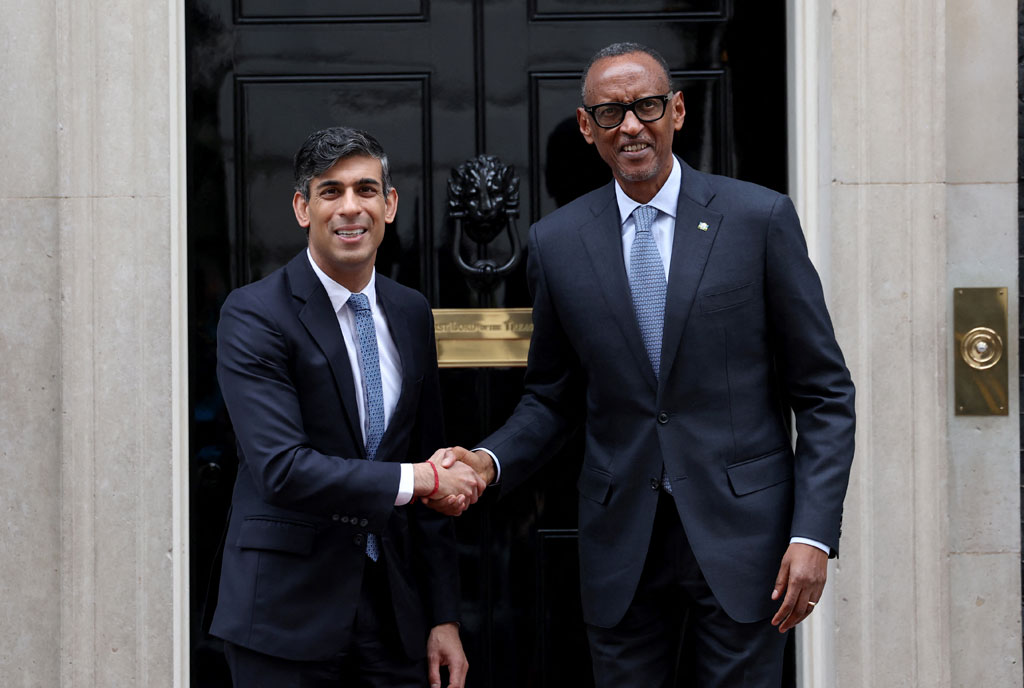THIS IS LIVING: Challenges to global vaccine efforts

What you need to know:
The 29-article issue was coordinated by the global health nonprofit PATH, with guest editors from the Bill & Melinda Gates Foundation, UNICEF, and the Johns Hopkins Bloomberg School of Public Health.
New York. A special supplement to the journal Vaccine published on Tuesday aimed at measuring the biggest challenges to global vaccine campaigns on Wednesday, noting that vaccine stockouts—or complete unavailability of vaccines—occur at least monthly, while 19 per cent to 38 per cent of vaccines worldwide are subjected to improper refrigeration practices.
The 29-article issue was coordinated by the global health nonprofit PATH, with guest editors from the Bill & Melinda Gates Foundation, UNICEF, and the Johns Hopkins Bloomberg School of Public Health.
Benjamin Schreiber, a senior health advisor with UNICEF and one of the editors of the supplement, explained that outmoded delivery systems could compromise the efficacy of vaccines.
“Often a supply arrives in a capital city and has to travel hundreds of kilometres before it gets to the correct clinic or health center,” Schreiber said in an interview. “We know a vaccine has to be kept stable at 2 to 8 degrees of Celsius, but our data show that’s not happening at least 20 per cent of the time.”
As part of the special issue, Schreiber co-authored a literature review on vaccine temperatures that looked at 45 studies on vaccine freezing in the supply chain. About half of all vaccines procured by UNICEF are “freeze sensitive,” meaning they are subject to damage if exposed to improper temperatures.
Since 2007, Schreiber and his co-authors found that the percentage of vaccines exposed to temperatures below recommended ranges during storage was 33 per cent in wealthier countries and 37.1 per cent in lower-income countries. Vaccine exposure to temperatures below recommended ranges occurred during shipments in 38 per cent of studies from higher-income countries and 19.3 per cent in lower-income countries.
“Freeze-sensitive vaccines costs UNICEF $1.2 billion [annually],” said Schreiber. “That’s a lot of vaccines that could potentially be less effective because of improper handling.”
Lack of detection of this problem can also lead to unforeseen disease outbreaks. Freezing incidents have been linked to increased pertussis cases in the United States and to a 2014 measles outbreak in Micronesia.
The solution, according to Schreiber, is twofold: technology like solar-paneled vaccine storage and temperature-stable vaccines, and “soft skills” training that teaches public health employees the proper handling of supplies.
“Expanding the use of freeze alarms and rigorous temperature monitoring is critical to ensuring that all children have access to potent, lifesaving vaccines,” said Robin Nandy, MD, principal advisor and chief of immunization at UNICEF, in a press release from global communications firm Burness. “In the long-term, we must work toward the development of products that can better withstand temperature variations.”
While freezing is a problem that affects vaccines in both high- and low-income countries, researchers found that vaccine stockouts, or instances of running out of vaccine supplies, are a startlingly frequent occurrence in many parts of the world.
“In places like sub-Saharan Africa, a stockout can interrupt vaccine services on a national level for months,” said Schreiber.
Schreiber used data collected from the World Health Organisation (WHO)-UNICEF Joint Reporting Form and UNICEF’s Vaccine Forecasting Tool from 2011 to 2015 to measure how often countries reported stockouts.
One in every three WHO member-states experienced at least one stockout of at least one vaccine for at least 1 month each year. And 38 per cent of nations in sub-Saharan Africa reported national-level stockouts annually.
The DTP (diphtheria, pertussis, and tetanus) vaccine accounted for 43 per cent of the stockouts, and the BCG (Bacillus Calmette–Guerin) tuberculosis vaccine accounted for 31 per cent.
“These stockouts really interrupt our ability to protect children from disease,” said Schreiber. Governmental funding delays accounted for 39 per cent of stockouts, while 23 per cent were caused by delays in procurement, and about 18 per cent were because of poor forecasting.
“For too many countries, it is nearly impossible to collect and harness data to forecast vaccine requirements and deliver vaccines when and where they’re needed,” said Jean Marie Okwo-Bele, MD, director of WHO Department of Immunisation, Vaccines, and Biologicals, in the press release.
“But there are innovations such as electronic data systems that are being piloted and scaled up in developing countries that could and should be more widely adopted.” (CIDRAP)




